Your propeller is one of the most damage-prone parts of your boat.
Think about it. Propellers are usually small, and their position underneath the boat makes them subject to debris entanglement, impact damage, and grounding
What’s more, repeated exposure to different water conditions can eventually wear down the metals used to construct propellers.
If you’re wondering whether your propeller has become bent or damaged, you’ve come to the right place!
In this article, we’ll discuss ten of the most common signs and symptoms of propeller damage.
Table of Contents
1. Trouble Steering
Your propeller may be small compared to the overall size of your boat, but it plays a huge role in how the boat gets around in the water.
Even small compromises to the prop can translate to noticeable changes in how your boat handles various conditions.
One of the symptoms you may notice is that you have trouble steering the boat.
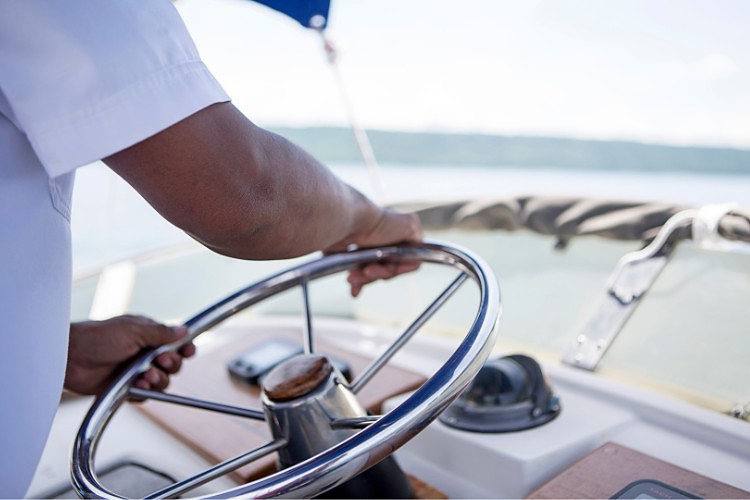
If a propeller is damaged or the blades become bent, the prop will not cut through the water as efficiently as it once did.
This will lead to a host of difficulties, including trouble steering.
If you notice that you have a harder time steering your boat, or if it struggles to maneuver as effortlessly as it used to, you may want to check if the prop is damaged.
2. Boat Riding Low
Another issue that may come up is a change in your boat’s position in the water.
Of course, if your boat is loaded down with more gear or passengers than normal, it will naturally ride lower in the water than usual.
But if it’s hauling a light load and it still seems lower than it should be, you might want to check the propeller.
If the prop is damaged, it may not be providing the lift necessary to maintain proper speed and positioning. Your boat will sink lower as the prop will be unable to keep up with the demand being placed upon it.
3. Poor Fuel Efficiency
If your prop sustains any kind of damage, it will have to work harder than usual to perform adequately.
As you might imagine, this is going to cost you when it comes time to fill up the gas tank.
If any part of your motor, including the prop, has to work harder, the engine is naturally going to burn more fuel.

This means that, if your prop is damaged, you will burn through a tank more quickly than normal.
You may find that you have to head back to the dock sooner than expected, or that you find yourself running low more often even though your boating habits haven’t changed.
If your fuel efficiency has suddenly gone noticeably down, it’s time to check your propeller.
4. Sluggish Performance
Damaged propellers simply don’t work as well as undamaged ones. They have to work harder, but they may still struggle to keep up with the demand you’re putting on them.
You may not notice any one problem specifically. It may just be that your boat feels more sluggish while you’re moving through the water.
Maybe it doesn’t accelerate like it used to. Maybe it doesn’t want to accelerate at all. Or perhaps it simply moves more slowly than you would like it to.
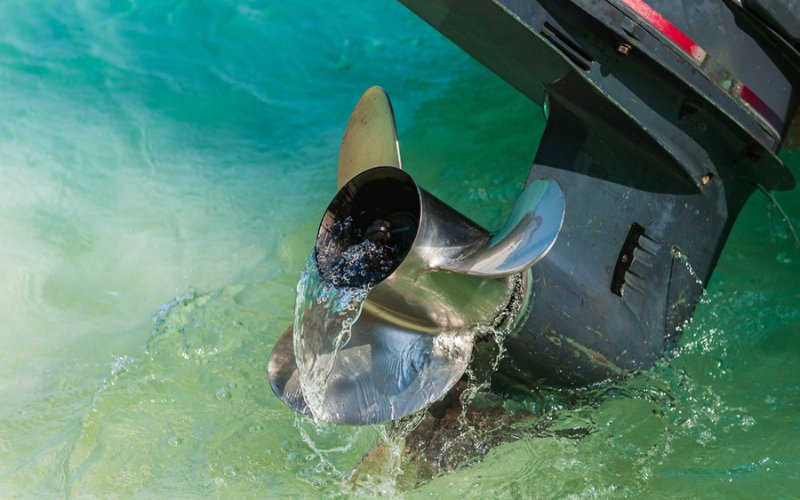
In this case, the symptoms may be rather vague, but you know that something feels off. If you can’t quite pinpoint the problem, take a look at your propeller.
5. Noises and Vibrations
A bent or damaged propeller won’t turn as easily or smoothly as it should. It may wobble around on the prop shaft or knock against other components of the boat or motor.
This wobbling and knocking may cause your motor to sound differently. You may notice that it sounds louder or produces a lot of extra noise.
The boat may also vibrate more. You will notice that it feels shaky or unsteady, and the vibrations may be bad enough that you feel uncomfortable moving around in the boat.
If you experience either of these symptoms, check the propeller for damage.
6. Prop Shaft Leakage
The prop shaft is the long pole-like structure that attaches to your propeller. Anything that causes damage to the prop shaft may also cause damage to the prop itself.
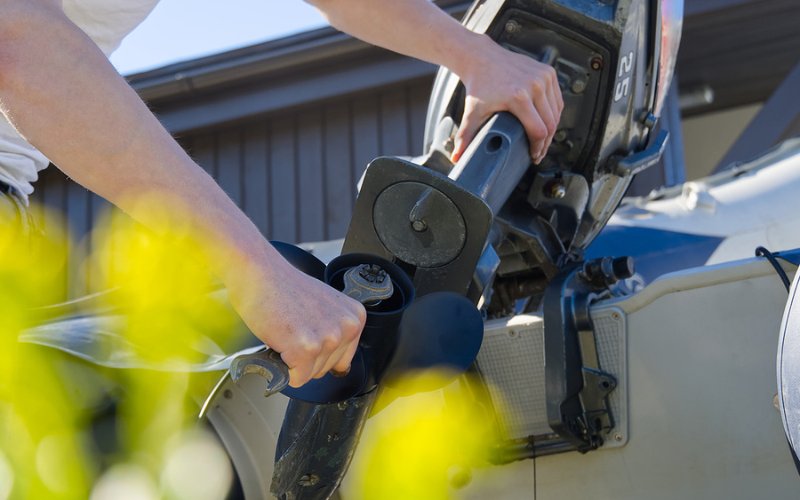
If you suspect the prop may be damaged, you may want to visually inspect both the propeller and the shaft. Even if the propeller appears undamaged at first glance, you may notice damage or leakage around the shaft.
If the shaft is leaking, especially around the base, you can suspect that there may be damage to the prop as well. Check the prop more closely for any damage you may have initially missed.
7. Chips, Cracks, etc.
If you experience any of the symptoms described above, it’s best to do a visual inspection of the propeller.
Look it over for any signs of damage such as chips, dents, cracks, nicks, or broken pieces. Even the smallest blemishes can affect the prop’s performance in the water.

If you spot any sort of damage, you may simply be able to get the prop repaired. If the damage is extensive enough, you may want to get it replaced altogether.
If you’re not sure whether it should be repaired or replaced, have a professional marine specialist or small engine mechanic take a look at it for you.
8. Corrosion
Another obvious sign of damage to your prop may come in the form of corrosion.
Most props are made of materials that resist corrosion, such as stainless steel, aluminum, and bronze.
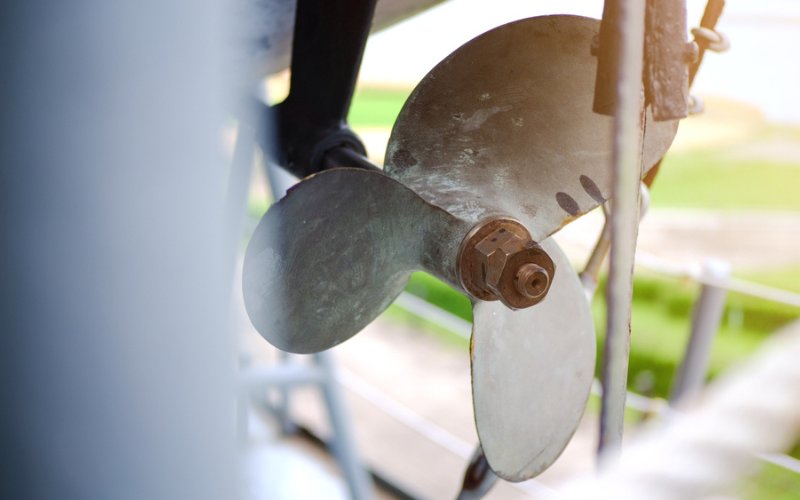
That said, some wear and tear is natural over time, and if you spend a lot of time in the water, your prop may eventually begin to corrode.
This is especially true in saltwater environments, where the corrosion process is often sped up.
If your prop isn’t performing as it should, look it over for corrosion. It may be time to have the prop replaced.
9. Misaligned Blades
If you’re looking at your prop and don’t notice any obvious signs of damage or corrosion, take a closer look at the blades.
Your prop’s blades should all be in line with each other. If one appears to be slightly in front of or behind the others, it has been bent and will need to be repaired.
Sometimes this misalignment is more obvious than others. You may notice that one or more of the blades are bent to a more extreme angle, or it may appear that none of them are lined up at all.
If the blades are not perfectly aligned with each other, take the prop to a repair specialist or have it replaced.
10. Thinned Blades
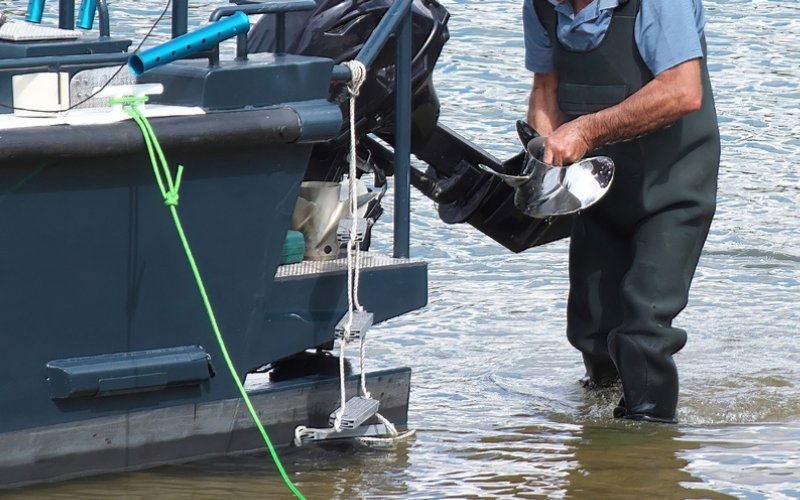
Finally, simple wear and tear to your prop can cause the blades to wear down over time. This is especially true of aluminum props, which are subject to metal loss due to damage and changing water conditions.
If your prop appears otherwise undamaged, it may be difficult to notice the signs of thinned-down blades. If you have another prop of the same size and style, you may want to compare it to your existing one.
If your propeller’s blades appear smaller or thinner than the comparison prop, then it probably isn’t performing as it should. It is time to replace the old prop with a new one.

Sarah Hood has been writing for Anchor Travel since 2021. When she’s not writing, she enjoys cooking, singing, and spending time in the great outdoors.

